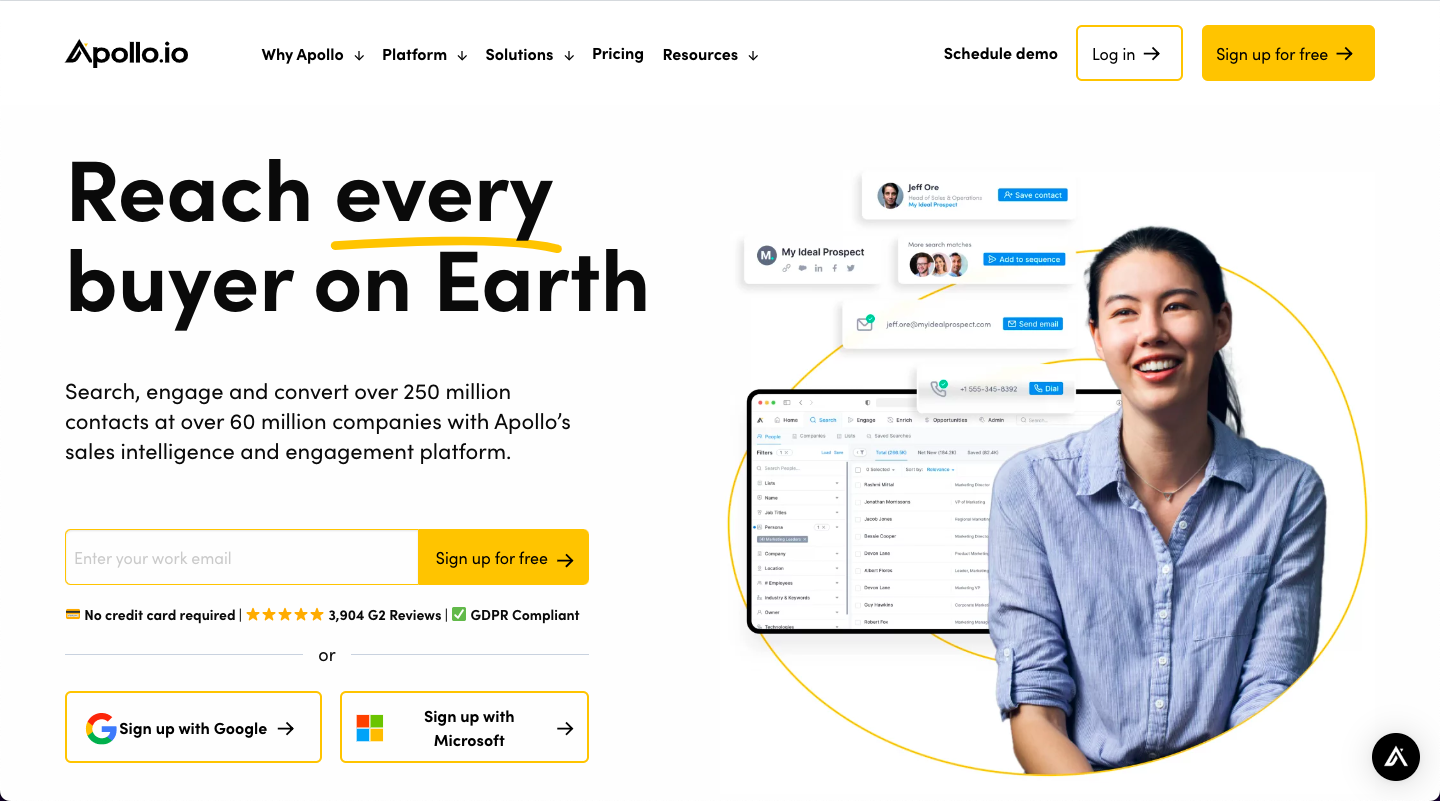Generating leads is an essential part of any business, but finding high-quality leads can be a daunting task. Fortunately, there are several tools available to help you identify potential customers who are ready to buy. One such tool is Apollo's buying intent data.
In this blog post, we will explore the concept of buying intent and how Apollo's buying intent data can help you find high-potential leads.
What is Buying Intent?
Buying intent refers to the likelihood that a potential customer is ready to make a purchase. It takes into account various factors, such as the customer’s behavior and engagement with your brand, as well as their interactions with other companies in your industry. By understanding a customer's buying intent, you can tailor your marketing and sales efforts to better meet their needs and increase your chances of closing a deal.
How Does Apollo's Buying Intent Data Work?
Apollo's buying intent data is based on a combination of machine learning algorithms and human intelligence. The tool analyzes data from various sources, including website visits, social media interactions, and email opens, to determine a customer's level of interest in your product or service.
The data is then scored on a scale from 1 to 100, with higher scores indicating a higher likelihood that the customer is ready to make a purchase. This score is known as the Apollo Buying Intent Score.
How to Use Apollo's Buying Intent to Find High-Potential Leads
Now that we understand how Apollo's buying intent data works, let's explore how you can use it to find high-potential leads.
1. Identify Your Ideal Customer Profile
Before using Apollo's buying intent data, you need to know who your ideal customer is. This includes factors such as demographics, industry, company size, and pain points. By identifying your ideal customer profile, you can narrow down your search and focus on leads that are more likely to convert.
2. Use Filters to Refine Your Search
Once you have identified your ideal customer profile, use Apollo's filters to refine your search. You can filter by various factors such as company size, industry, and location, as well as the Apollo Buying Intent Score.
Filtering by the Apollo Buying Intent Score allows you to focus on leads that are most likely to convert. For example, you can filter for leads with a score of 80 or higher, indicating a high likelihood of purchase.
3. Prioritize Your Leads
After filtering your results, prioritize your leads based on their Apollo Buying Intent Score. Focus on leads with the highest scores, as they are the most likely to convert. This will help you maximize your time and resources and increase your chances of closing a deal.
4. Tailor Your Marketing and Sales Efforts
Once you have identified high-potential leads, tailor your marketing and sales efforts to better meet their needs. Use the data from Apollo's buying intent score to personalize your messaging and provide targeted content that addresses their pain points. This will help you build a stronger relationship with potential customers and increase your chances of closing a sale.
Conclusion
In conclusion, Apollo's buying intent data can be a valuable tool for finding high-potential leads. By understanding a customer's buying intent, you can tailor your marketing and sales efforts to better meet their needs and increase your chances of closing a deal.
To make the most of Apollo's buying intent data, remember to identify your ideal customer profile, use filters to refine your search, prioritize your leads, and tailor your marketing and sales efforts. By following these steps, you can maximize your time and resources and increase your chances of success.
Happy lead hunting!
